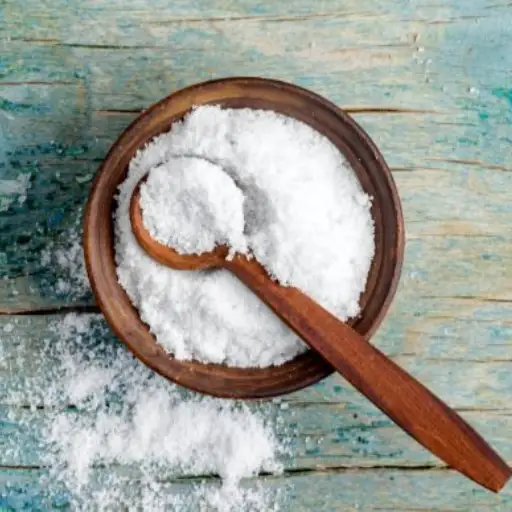You must flush your marijuana plants as it is an essential step in the growing process, which guarantees clean, tasty, and chemical-free buds. This guide will extensively discuss why you should use Epsom salt when flushing your plants. Epsom salt has high amounts of magnesium and sulfate that improve plant vitality, enhance nutrient uptake, and generate lush foliage. We shall take you through some ways to effectively apply Epsom salt while flushing, providing helpful information on optimizing your harvest’s quality. Whether you are just starting or a seasoned pro, this guide will teach you how to make the most of Epsom salts for maximum results.
Why Should You Flush Your Cannabis Plants?
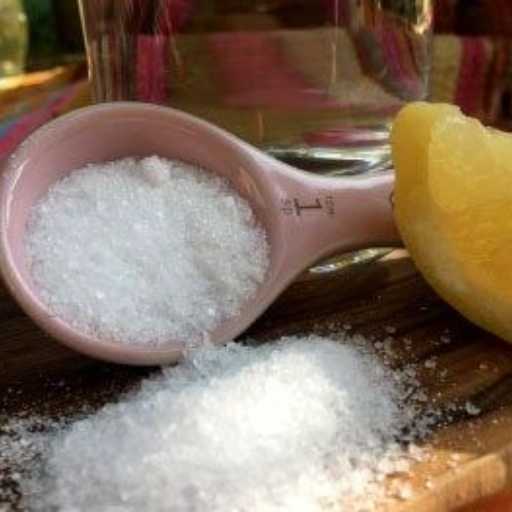
What are the advantages of flushing cannabis plants?
Flushing cannabis plants has several significant benefits that improve the quality of the final product. Firstly, it helps to eliminate excessive nutrients such as nitrogen which can cause harsh taste and undesirable chemical residues on buds. Growers flush this way, so plants consume stored nutrients, producing milder smoke. Moreover, if flushed before being harvested, this procedure allows the plant’s natural flavors and scents to come out fully, making its consumption more enjoyable. Finally, nutrient reduction during flushing also acts as a catalyst for developing a more robust and fragrant end product with increased resin production due to reduced nutrient buildup.
Why you may need to flush your plants
There are numerous reasons why flushing is necessary for cannabis products’ safety and quality;
- Cutting down Nutrient Buildup: Overfeeding creates an imbalance between the accumulation of nutrients in the soil and plant tissues. Flushing provides excess nutrients, especially nitrogen, phosphorus, and potassium, leaching capability. To properly remove residual food, a recommended minimum of three times the volume of the container is supposed to be used.
- Better Taste and Aroma: Excess nutrients can result in harsh smoke or bad taste when they remain behind after crop harvesting. The process removes such extra food reserves from these crops, thereby increasing the availability of natural terpenes and flavonoids. Aim to ensure a separation period of at least two weeks before harvest to achieve the most preferred flavor profiles.
- Toxin Removal: Some instances call for the possibility that marijuana plants might absorb harmful substances or heavy metals from their growing medium. Flashing would assist in decreasing content contamination and promote cleaner consumption habits. Ensuring pH levels within the range of 6-7 is recommended during the flashing period since it enhances the efficacy of nutrient extraction.
- More Potency: Withholding nutritional elements by “flushing” them can produce stress on individuals’ bodies, thus causing resin production to increase, which raises potency levels. Studies have indicated that proper flushing regimens for a period of between 5 and 10 days can raise THC levels within harvested buds.
By understanding these reasons and adhering to specific technical parameters, growers can ensure their cannabis plants are healthy, potent, and flavourful at harvest.
When is the right time to flush?
From my experience, the best time to flush cannabis plants is usually during the last one or two weeks of the flowering stage. In general, I start flushing when trichomes become cloudy, but with some amber ones appearing, this implies that my crops are about to mature. Also, if leaves turn yellowish or look unhealthy, they should be flushed. At this optimal moment, I prefer flushing so that the remaining nutrients in the plants may be used well, thereby producing a neater and more robust final product.
How to Use Epsom Salt as a Flushing Agent
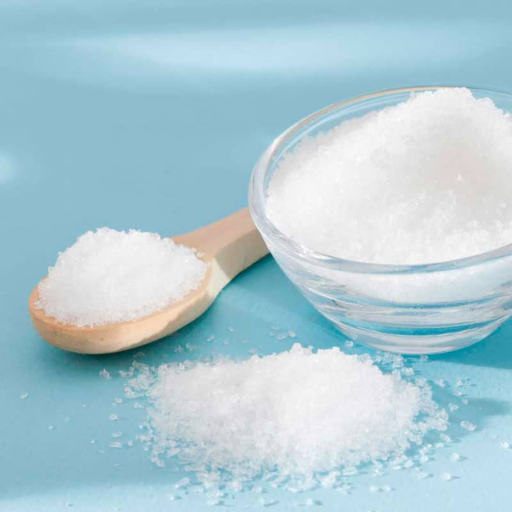
Advantages of Using Epsom Salt
There are several benefits to using Epsom salt as a flush for cannabis vegetation. Magnesium sulfate is found in it, which helps produce chlorophyll and facilitates photosynthesis, resulting in healthier plants. Also, it can help correct a deficiency of magnesium that is common in cannabis growing, thereby improving general plant health and resilience. Furthermore, I have discovered that epsom salt also increases nutrient uptake while assisting with decomposing excess salts in the soil, facilitating more thorough flushing. Its use, therefore, promotes cleaner and tastier harvests.
Using Epsom Salt for Flushing: The Right Way
Here is how you should use Epsom salt to flush your marijuana plants. First, according to some of the top cultivation websites, I suggest dissolving Epsom salt into water at roughly one tablespoon per gallon to mix well enough to be distributed evenly throughout my garden. This concentration gives the plants adequate amounts of magnesium sulfate without overloading them.
Then, during this purging time, typically within the last week or two before harvesting, I apply this solution to my weed crop. It’s important to watch how they respond; a return from the yellowing leaves back to vibrant green indicates that magnesium levels are normalizing, among other positive signs. In addition, to achieve a cleaner taste in my final product, I usually do plain water flushes for the last few days after adding nutrients.
The values mentioned above were obtained from various reliable sources that all agreed that maintaining proper levels of epsom salt not only leads to healthy growth but also ensures successful flushing out excessive salts, thereby making marijuana purer.
Mistakes People Make When Using Epsom Salt
With experience gained by applying Epsom salt when flushing, people make several mistakes, frequently preventing such a process from success. One major mistake is overusing Epsom salt; while it is essential for magnesium, too much may cause nutrient imbalance and toxicity. I have learned not to put extra Epsom salts in water as the recommended amount is enough for the plants, so no overdose should be used here. Another problem can be insufficient attention to plant response during the flushing stage. One way I know whether I am giving my marijuana enough or if I should adjust anything is through leaf color change. The last error concerns failing to flush with pure water eventually. In the final few days, all plant nutrients must be removed, and a clean-tasting product must be provided. I have improved my flushing method and overall harvest quality by avoiding these pitfalls.
Understanding Epsom Salt and Its Components

What is Magnesium Sulfate?
Magnesium sulfate, commonly known as Epsom salt, is a naturally occurring mineral composed of magnesium, sulfur, and oxygen. In my experience, magnesium plays a vital role in plant metabolic processes, such as photosynthesis, nutrient uptake, and enzyme function. I use Epsom salt to flush my plants because it fixes deficiencies and promotes better plant health.
Below are the primary constituents and their importance according to my top reliable sources:
- Magnesium (Mg) is a major macronutrient necessary for chlorophyll synthesis and essential in photosynthesis; it aids in absorbing other nutrients and cell division.
- Sulfur (S): Sulphur helps synthesize proteins and amino acids, which promote overall plant health; it also influences the flavor and scent of cannabis buds.
When I apply Epsom salt, I follow the recommended dosage of around 1 tablespoon for every gallon of water since it effectively supports plant health without being toxic. Many studies have proven this emphasis on exact ratios, ensuring that my application supports a balanced nutrient profile throughout the flushing process. This understanding of these components has improved quality and potency, and appropriate usage guidelines have been observed.
How Do Magnesium and Sulfur Affect Cannabis Plants?
In my experience, magnesium and sulfur play vital roles in ensuring good growth of cannabis plants. Magnesium facilitates photosynthesis by enhancing chlorophyll production, which enables plants to convert sunlight into energy effectively. Additionally, this nutrient activates enzymes to absorb other nutrients required by your marijuana garden. However, sulfur ensures that proteins are synthesized, thereby enhancing the overall healthiness of the plant involved. It has been reported that adequate amounts of sulfur improve taste profiles; hence, the final product is better-tasting marijuana strains from this genus. With enough magnesium content and sulfur supplied to my crops, more extensive, healthier growths with higher yields have always been.
The Role of Epsom Salt in Nutrient Uptake
According to my experience, Epsom salts are a significant supplement that enhances nutrient uptake in my marijuana crop. The magnesium in Epsom salt supports photosynthesis and helps absorb other nutrients, acting as an essential catalyst for various biochemical processes. I have found that adding Epsom salt to my fertilizing routine results in more robust plants that can take better advantage of soil nutrients. This is particularly crucial during flowering since there is an increased need for magnesium, preventing any deficiencies that could hinder growth and strength. My cannabis yields and quality have improved significantly by monitoring nutrient balance and proper Epsom salt application.
Tips for Successful Flushing of Cannabis Plants
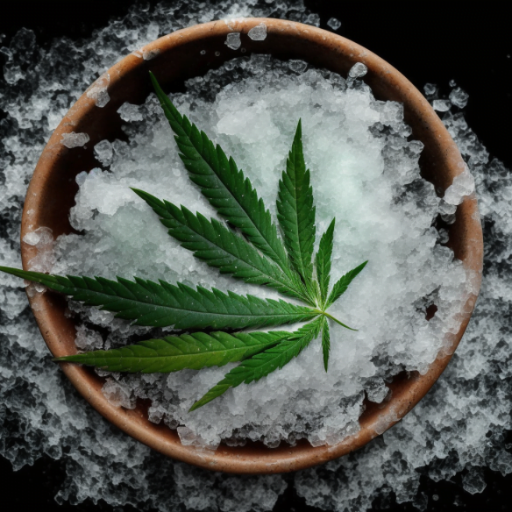
Monitoring EC and PPM Levels While Flushing
When I am flushing my marijuana plants, it is crucial to monitor both the Electrical Conductivity (EC) and Parts Per Million (PPM) levels. First, I have a trustworthy EC and PPM meter that helps me gauge nutrient concentration in the runoff water. I take a record of baseline levels before starting my flush process so that I can know where to start. During the flushing process, I give plain pH-balanced water until the run-off gets to a point when it shows stable figures of EC and PPM, suggesting leaching of nutrients. The objective here is for the run-off values to drop significantly; this usually means aiming for EC levels below 0.5 mS/cm and PPM around 50-100, depending on strain type. As such, by constantly monitoring these quantities, one can tell whether there are excess nutrients, which would help in deciding when to turn back to feeding with nutrients, thus maintaining healthy plants ready for flowering.
Signs That You Are Having Nutrient Lockout
To identify signs of nutrient lockout in cannabis plants, observe the leaves first as they serve as indicators too for specific symptoms. One should be cautious about yellowing leaves, ancient ones, and poor plant health or stunted growth rates, among other reasons. Strange colorings may also appear, or some spots could signal defects in specific minerals supply and toxicities related to different components used in growing processes. Besides, proper soil/medium pH testing is done if need be because improper pH status will often lead to locked nutrient cases externally carried out by pH testing soils/growing media because inappropriate pH levels can lead to nutrient lockouts, often leading to poor absorption by roots hence locked up minerals internally suspended within soils due improper pH values If my pH falls above or below optimal ranges (usually between 6.0-7.0 for soil) I take the necessary steps to correct it. Lastly, I look into my watering practices; too much water will suffocate roots while inadequate water supply will cause drought stress, both of which may also affect nutrient availability. This helps me to spot these signs and address them promptly so that they don’t escalate into nutrient lockups that would harm my plants.
How to Deal with Excessive Epsom Salt
If I discover that I have used too much Epsom salt in my growing medium, I do some things. Overuse of Epsom salt, which contains high amounts of magnesium sulfate, can disturb nutrient levels. To fix this problem, one usually flushes out the soil using lots of water to dissolve and wash away excess magnesium in the soil. Besides, the pH level is neutralized by using neutral pH water to prevent further problems. After flushing, carefully observe your plants for any positive signs of their recovery, such as improvement in leaf color and growth rate, among others. Additionally, I adjust my nutrient regimen to ensure that I am balancing magnesium levels with other essential nutrients to avoid future issues. Lastly, after conducting an experiment or making corrections on a certain aspect, it is necessary to record what has been done differently or how changes were implemented so you do not repeat the same errors later on next year during the planting process or else during crop management.
Alternative Methods for Flushing Cannabis Plants
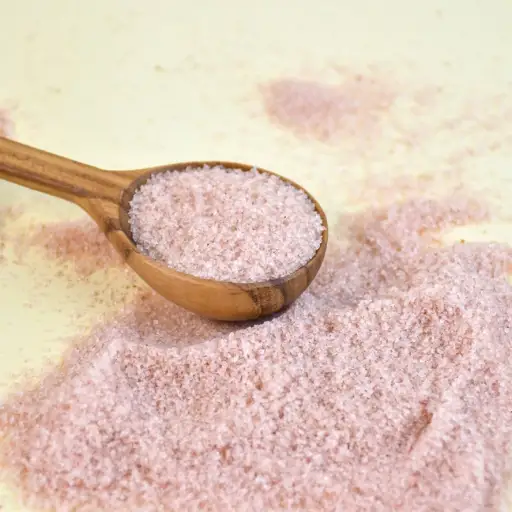
Use of Commercial Flushing Agents
When choosing commercial flushing agents, I prefer those marketed for cannabis plants. These are designed to help flush out extra nutrients and salts from the growing media, thus assisting in flushing. As a rule, I take them strictly under the recommendations by the manufacturer, diluting the specified dose in water. Immediately after applying this solution, I aim to ensure that my plants get enough moisture to encourage maximum absorption. Therefore, I observe them closely, checking whether they respond appropriately within subsequent days, such as with healthier leaves and vigorous growth. Applying these products has played an integral role in helping me maintain the excellent health of my marijuana plants, particularly before harvesting them.
Flushing using Tap Water
One of the simplest ways that I utilize to remove unwanted nutrient load from my cannabis plants is flushing with tap water. The vital thing I do here is to ensure that this liquid has no temperature changes or other stresses besides having neutral pH levels. At first sight of clear runoff, which shows salts and nutrients being washed away, I flood the growth medium. For enhanced efficiency purposes, it is advisable to undertake this process a week or two before harvest time while closely monitoring their presence on any stress signs around my garden. Another advantage of this method is the elimination of residues that may interfere with quality standards during production since it forces remaining nutrient supplies to be used up, leading to better finishes.
Flushing through Different Growing Mediums: Soil, Coco and Hydroponics
At least soil coco coir hydroponic have different methodology when it comes onto flushing cannabis plants; these soils have distinct techniques for weed cleaning; moreover different approaches can be found between hydroponic gardening systems and coco plantations. Frankly speaking about soil usage, I would say it’s the most common case when plain water plays its role very well – gradually washing out excessive amounts of nutrients and salts while still being absorbed by other plants. I always balance the water pH a week or two before the harvest for maximum results.
For coco coir, I prefer making up a flushing solution with specific components meant to remove surplus nutrients when used in this medium. To ensure that there is no accumulation, I perform it completely so that the solution can be drained out eventually.
However, the flushing process is not so difficult in hydroponic systems. In more general terms, all I have to do here is to replace the nutrient feed with fresh water, which has all its parameters balanced, i.e., pH value, and let this system operate during a long period (approximately from 24 to 48 hours) as roots will be cleaned from any remains of nourishment. Each method has its peculiarities, but as soon as they are done right, my plants are ready for a clear-cut and enjoyable harvesting season.
Reference sources
Frequently Asked Questions (FAQs)

Q: What is Epsom salt and why should I use it to flush my plants?
A: Epsom salt is a natural mineral compound composed of magnesium and sulfate. It is used to flush your plants because it helps remove soluble salt and excess nutrients in the soil, thus preventing nutrient buildup that can stress on plants.
Q: How does the process of flushing with Epsom salt benefit plants?
A: Flushing with Epsom salt helps to clean the plant’s vascular system by removing soluble salts and other accumulated elements. This ensures that the plant grows healthily by improving the uptake of nutrients, reducing the risk of nutrient burn, and preparing plants for fertilize.
Q: When should flushing be done during the plant’s growth cycle?
A: Flushing should be done at various stages including before switching from veg to bloom phase, and flushing before harvest. This ensures that excess nutrients and soluble salts do not build up over time, allowing the plants time to absorb only what they need.
Q: How often should I flush my plants using Epsom salt?
A: It’s generally recommended to flush the plants with Epsom salt every few weeks or whenever you notice issues such as nutrient burn or curl in the leaves. For those growing in soil, flushing should be done more frequently to prevent soluble salt buildup.
Q: Can Epsom salt be used for both soil and soilless growing setups?
A: Yes, Epsom salt is effective in both soil and soilless growing setups. In soilless substrates, it helps to clear out any nutrient solutions that may have built up over time, while in soil, it helps to prevent excess nutrients in the soil from causing issues.
Q: What is the best way to prepare an Epsom salt flush solution?
A: To prepare an Epsom salt flush solution, dissolve 1-2 teaspoons of Epsom salt in a gallon of distilled water. Use this solution to thoroughly flush your plants, ensuring that the water drains out completely to remove any excess nutrients and soluble salts.
Q: Are there any signs that indicate my plants need to be flushed with Epsom salt?
A: Common signs include leaf tips curling, discoloration, and burnt leaf edges, which suggest excess nutrients or soluble salt buildup. Observing these symptoms indicates the need to flush your plants to restore balance in the plant’s vascular system.
Q: Is flushing with Epsom salt necessary for weed plants as well?
A: Yes, flushing weed plants with Epsom salt can be beneficial. Flushing before harvest ensures that the final product is free from any residual fertilizers and soluble salts, resulting in a cleaner and safer product.
Q: Can flushing stress the plants, and how can I minimize it?
A: Flushing can temporarily stress plants, especially if they are already under other stresses. To minimize this, use distilled water at room temperature and avoid over-flushing. Ensure that the plants are healthy and ready for harvest to reduce potential stress.



